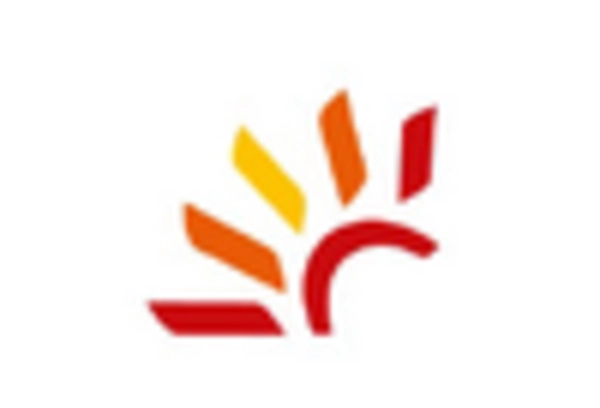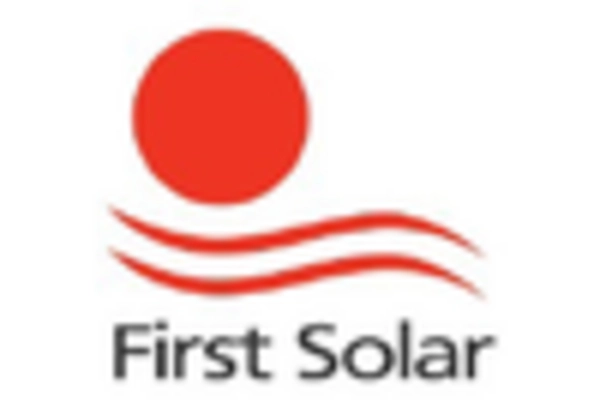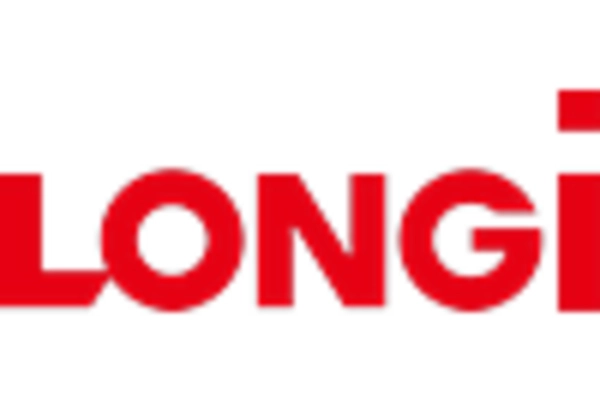Incentives and Tax Benefits
In the fixed tilt-solar-pv market, various federal and state incentives play a crucial role in promoting solar energy adoption. The Investment Tax Credit (ITC) allows consumers to deduct a significant portion of their solar installation costs from their federal taxes, which can amount to 26% of the total cost. Additionally, many states offer their own incentives, such as rebates and tax credits, further enhancing the financial appeal of solar investments. These incentives are particularly impactful in the fixed tilt-solar-pv market, as they lower the upfront costs for consumers and businesses, making solar installations more financially viable. As awareness of these benefits grows, it is anticipated that more stakeholders will invest in fixed tilt-solar-pv systems, thereby stimulating market growth.
Cost Reduction in Solar Technology
The fixed tilt-solar-pv market is experiencing a notable trend of decreasing costs associated with solar technology. The average cost of solar photovoltaic systems has dropped by approximately 70% over the past decade, making solar energy more accessible to a broader range of consumers and businesses. This reduction in costs is primarily attributed to advancements in manufacturing processes and economies of scale. As a result, the fixed tilt-solar-pv market is likely to see increased adoption, as both residential and commercial sectors seek to capitalize on lower installation costs. Furthermore, the decreasing price of solar panels and related components is expected to enhance the overall competitiveness of solar energy compared to traditional energy sources, thereby driving growth in the fixed tilt-solar-pv market.
Growing Demand for Renewable Energy
The fixed tilt-solar-pv market is witnessing a surge in demand for renewable energy sources, driven by a combination of consumer preferences and corporate sustainability goals. A significant portion of the U.S. population is increasingly prioritizing clean energy solutions, with surveys indicating that over 70% of consumers prefer renewable energy options. This shift in consumer behavior is prompting businesses to adopt solar energy solutions to meet sustainability targets and enhance their brand image. Consequently, the fixed tilt-solar-pv market is likely to benefit from this growing demand, as more companies and individuals seek to transition away from fossil fuels. The increasing emphasis on renewable energy is expected to create a favorable environment for the expansion of the fixed tilt-solar-pv market.
Regulatory Framework and Supportive Policies
The regulatory framework surrounding the fixed tilt-solar-pv market is becoming increasingly supportive, which is likely to facilitate market growth. Various state-level policies, such as Renewable Portfolio Standards (RPS), mandate a certain percentage of energy to be sourced from renewable sources, including solar. These regulations encourage utilities to invest in solar projects, thereby creating a more favorable environment for the fixed tilt-solar-pv market. Additionally, the federal government has introduced various initiatives aimed at promoting renewable energy, which further bolsters the market. As these policies evolve and become more robust, they are expected to provide a solid foundation for the continued expansion of the fixed tilt-solar-pv market.
Technological Innovations in Solar Efficiency
Technological innovations are playing a pivotal role in enhancing the efficiency of solar panels, which is particularly relevant to the fixed tilt-solar-pv market. Recent advancements in photovoltaic technology have led to the development of high-efficiency solar cells that can convert a greater percentage of sunlight into electricity. For instance, some new models boast efficiencies exceeding 22%, which is a notable improvement over traditional panels. This increase in efficiency not only maximizes energy output but also reduces the land area required for installations. As these innovations continue to emerge, they are likely to attract more investors and consumers to the fixed tilt-solar-pv market, thereby fostering growth and expansion.

















Leave a Comment